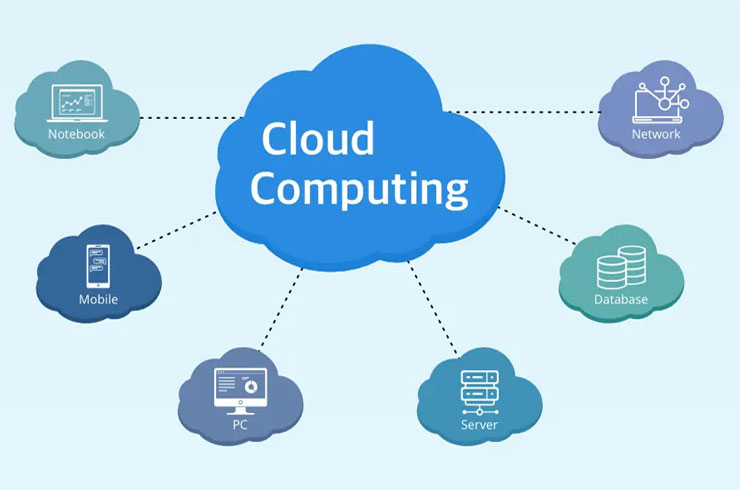Cloud Computing
Cloud computing is a model for delivering computing services—including servers, storage, databases, networking, software, analytics, and intelligence—over the internet ("the cloud"). Instead of owning and maintaining their own physical infrastructure, individuals and organizations access these resources on-demand from a cloud service provider (CSP). This allows for greater flexibility, scalability, and cost-effectiveness.



Here's a more detailed explanation :
Core Concepts :
On-demand access :
Users can access computing resources as needed, paying only for what they use, similar to a utility service.
Scalability :
Cloud resources can be easily scaled up or down based on demand, allowing businesses to adapt to changing needs.
Elasticity:
Cloud resources can be automatically scaled up or down based on demand, providing a flexible and responsive environment.
Pay-as-you-go pricing :
Users are typically charged based on their actual usage of cloud services, leading to potential cost savings.
Resource pooling :
Cloud providers share computing resources among multiple users, optimizing resource utilization and cost.
Types of Cloud Computing:
Infrastructure as a Service (IaaS) :
Provides access to fundamental computing resources like servers, storage, and networking.
Platform as a Service (PaaS) :
Offers a platform for developing, running, and managing applications, including tools, libraries, and programming languages.
Software as a Service (SaaS) :
Delivers ready-to-use software applications over the internet, such as email, CRM, and office productivity suites.
Benefits of Cloud Computing:
Reduced IT costs :
Eliminates the need for large upfront investments in hardware and infrastructure, leading to lower capital and operational expenses.
Increased agility and innovation :
Enables faster development and deployment of applications and services, allowing businesses to respond quickly to market changes and customer demands.
Improved scalability and flexibility :
Cloud resources can be easily scaled up or down to meet fluctuating demands, providing greater flexibility and responsiveness.
Enhanced collaboration and productivity :
Cloud-based tools and applications facilitate collaboration among users, regardless of their location.
Better business continuity and disaster recovery :
Cloud providers offer robust infrastructure and backup solutions, ensuring business continuity and data recovery in case of disruptions.
Advanced security and compliance :
Cloud providers invest heavily in security measures and compliance certifications, offering a secure environment for data and applications.
Global reach:
Cloud services can be accessed from anywhere with an internet connection, enabling businesses to expand their reach to new markets.


